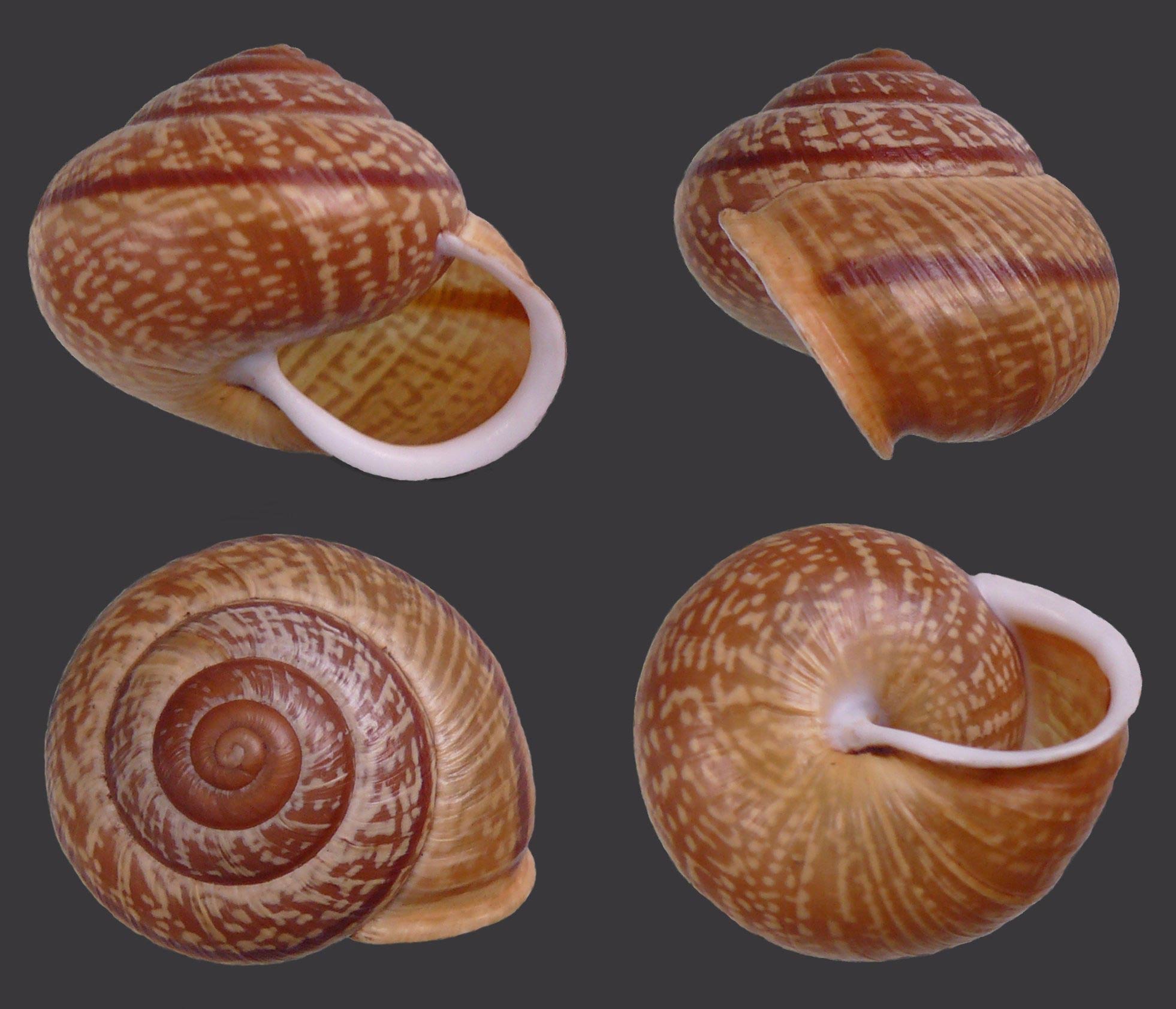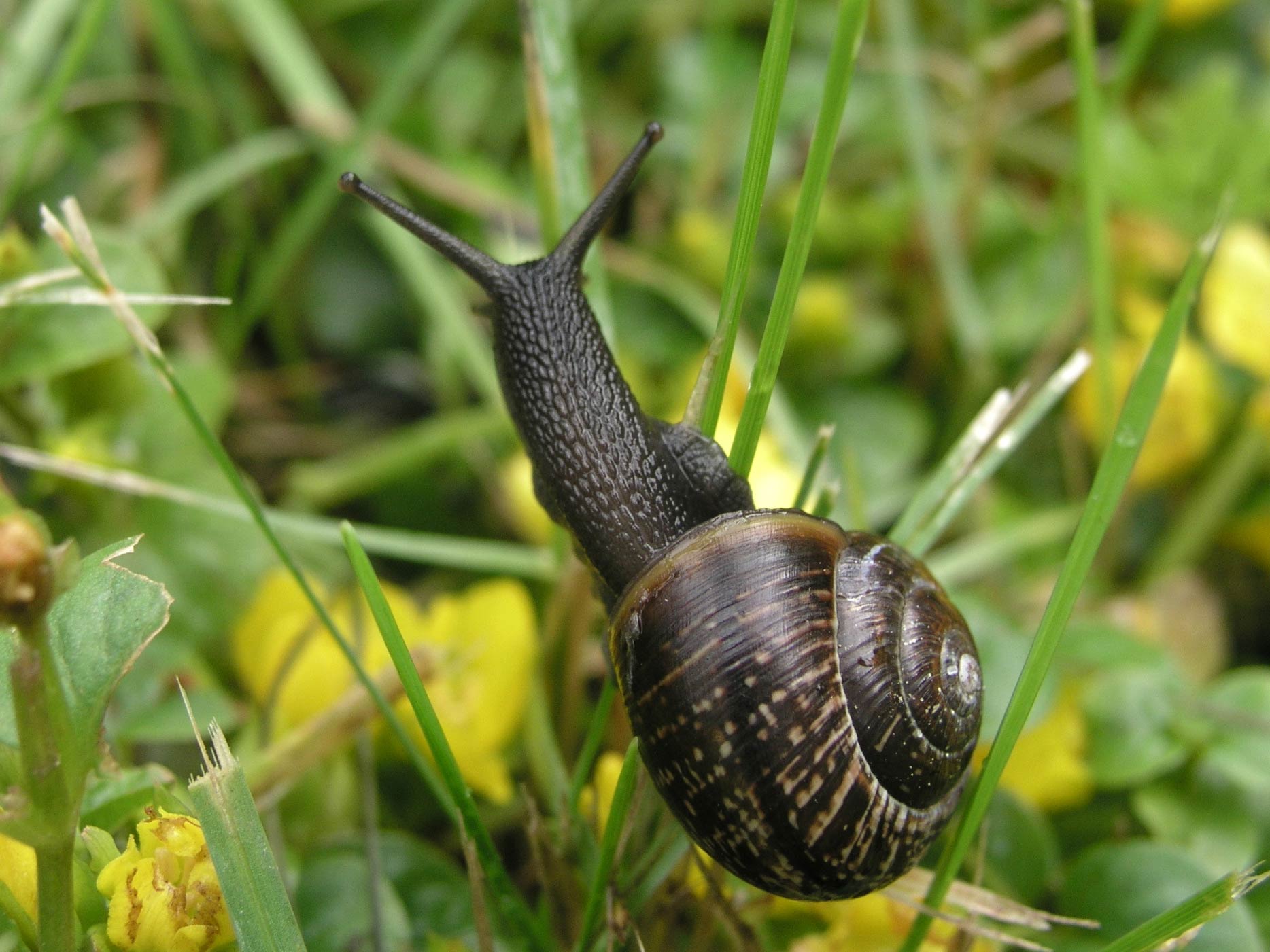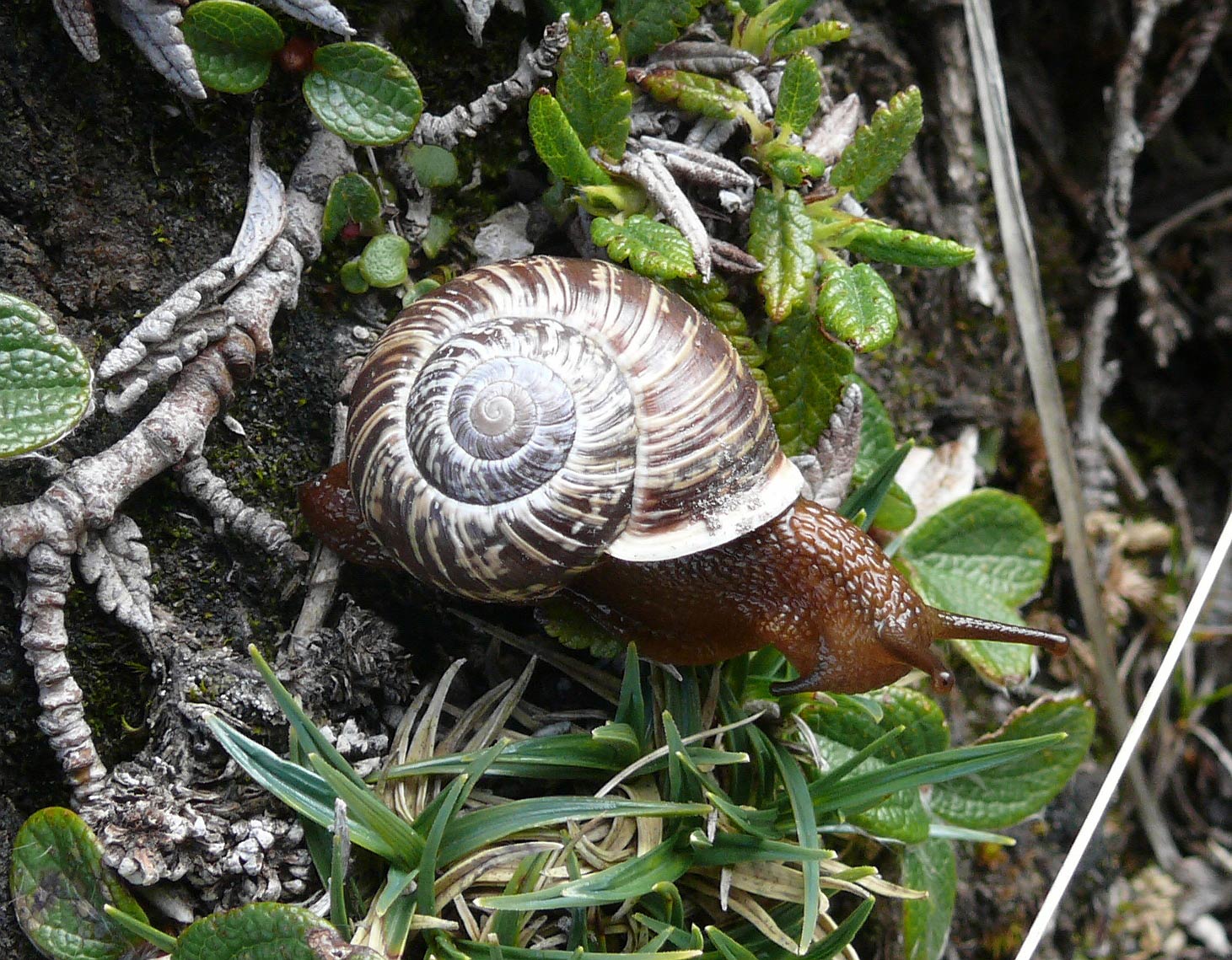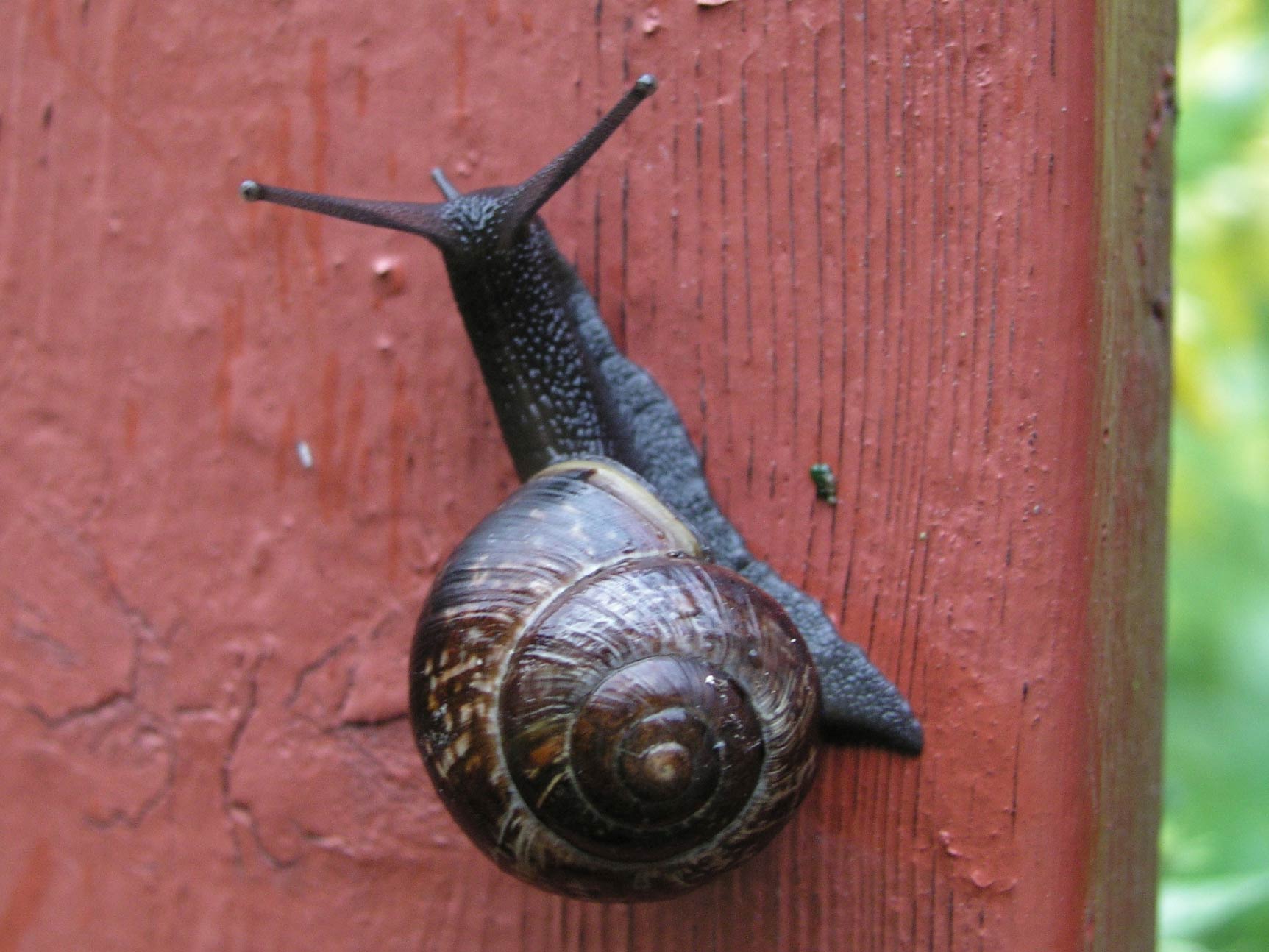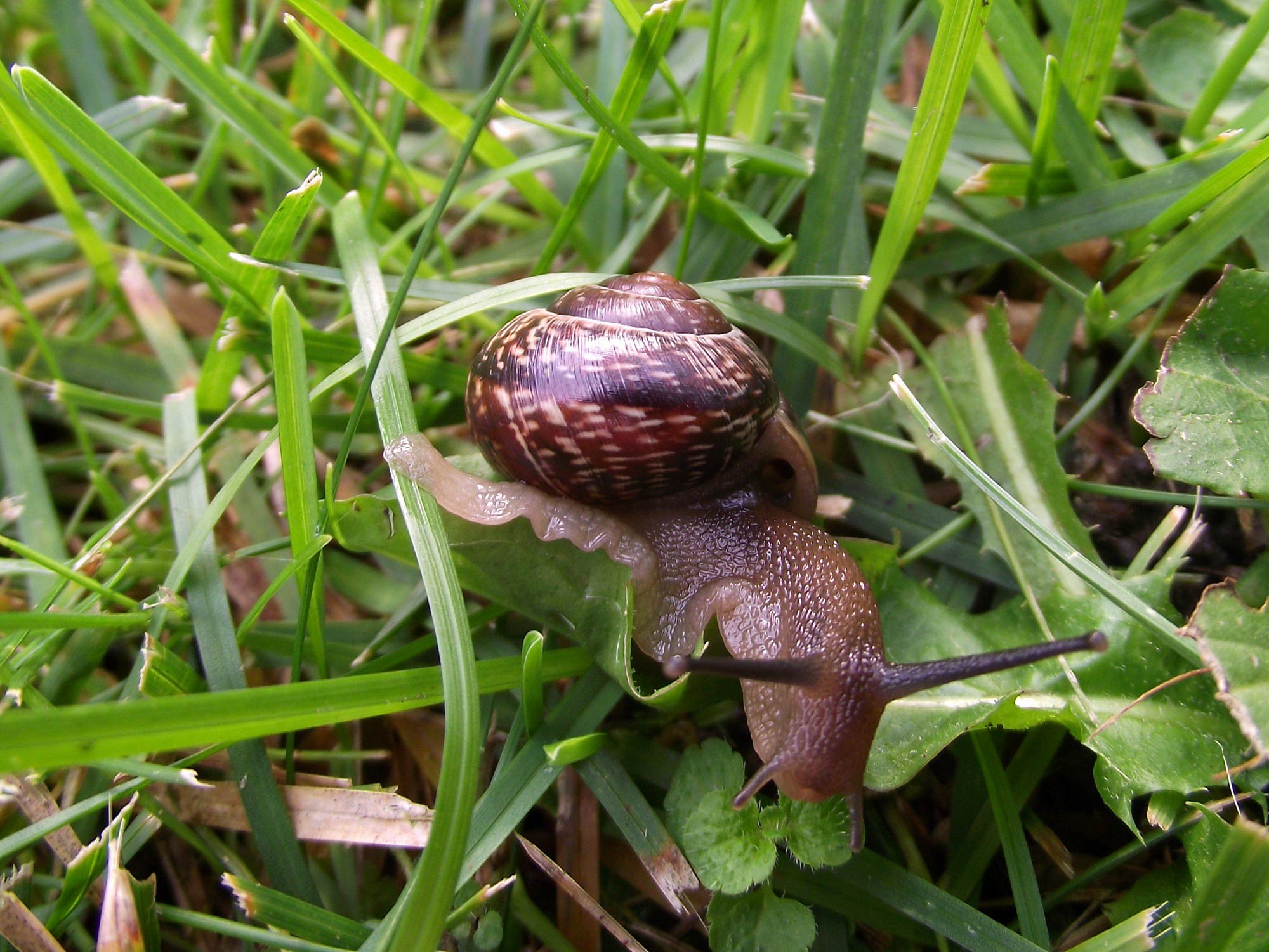Arianta arbustorum
|
Arianta arbustorum. (Photo: © T. Meijer, Wikimedia) |
|
Arianta arbustorum. (Photo: © H. Svensson, Wikimedia) |
|
Arianta arbustorum. (Photo: © B. Haynold, Wikimedia) |
|
Arianta arbustorum. (Photo: © H. Svensson, Wikimedia) |
|
Arianta arbustorum. (Photo: © R. Reisman, Wikimedia) |
|
Arianta arbustorum. (Photo: © A. Salo, Wikimedia) |
Family
Helicidae
Species
Arianta arbustorum (Linnaeus, 1758)
Common name
Copse snail
Description
The color pattern of this species is highly variable; however, most individuals are light brown with straw-colored spots and a large dark brown stripe. The heliciform shellShell:
A hard, inflexible, calcareous or chitinous structure that vary in size and may either completely encasing the animal, covering some part of it or be internal.
will also vary in size (10-22 mm high and 14-28 mm wide with 5-6 whorlsWhorls:
Pleural of whorl. A whorl is a complete spiral turn/growth of the shell of a mollusc. The whorls are counted from the apex outwards.
). The umbilicusUmbilicus:
A navel-like indentation or depression in the center of the shell. It may be described as open (inside of columella visible), partially closed (partly covered by base of aperture) or completely closed (not visible). The width of the umbilicus is a measure of its greatest diameter.
is completely covered by the columellar edge of the apertureAperture:
The major opening of a shell that the body of the animal may be retracted.
. The lipLip:
The margin of the aperture, which may be sharp or thickened depending upon the species (Also see apertural lip).
of the shellShell:
A hard, inflexible, calcareous or chitinous structure that vary in size and may either completely encasing the animal, covering some part of it or be internal.
is bone white. SinistralSinistral:
Having the opening of the shell on the left side when the observer hold the shell so that the apex is upwards and the aperture faces them.
(mouth on left) and dextralDextral:
Having the opening of the shell on the right side when oriented so that the apex is upwards and the aperture is facing you.
(mouth on right) specimens exist. The body of the animal typically is black.
Native range
Western and Central Europe
Distribution
North America:
- Canada: Newfoundland
Europe: Western and Central
Ecology
This snail survives in damp meadows, marshy habitats as well as mountains and sandhills. Its longevity is approximately 14 years, attaining maturity at 2-4 years.
Synonyms
- Helix arbustorum
- Helicigonia arbustorum
References
Anderson 2005Anderson 2005:
Anderson, R. 2005. An annotated list of the non-marine Mollusca of Britain and Ireland. Journal of Conchology 38: 607-637.; Boycott 1934; Kerney et al. 1979Kerney et al. 1979:
Kerney, M.P., R.A.D. Cameron and G. Riley. 1979. A field guide to the land snails of Britain and North-west Europe. Collins, London. pp. 288.

